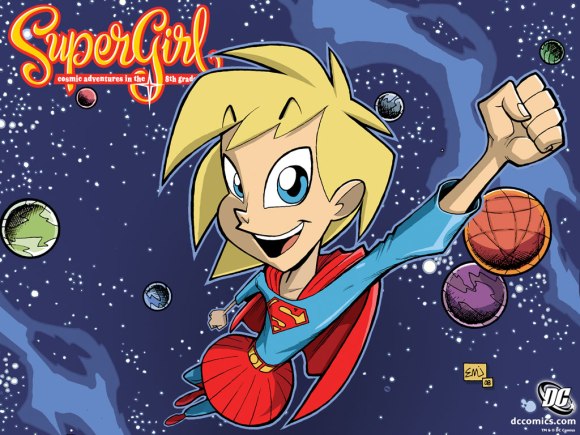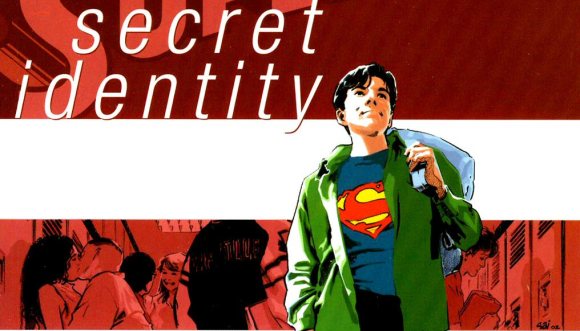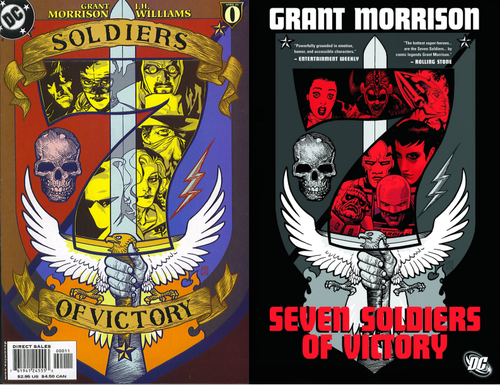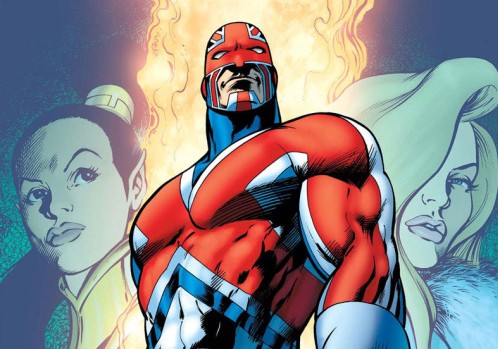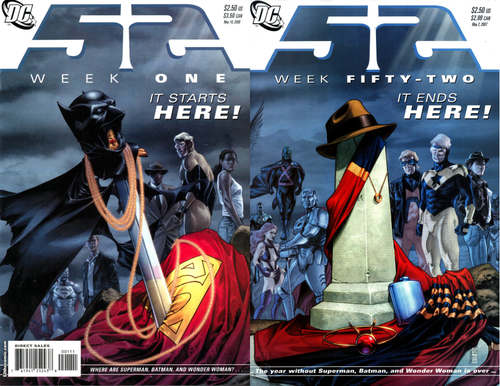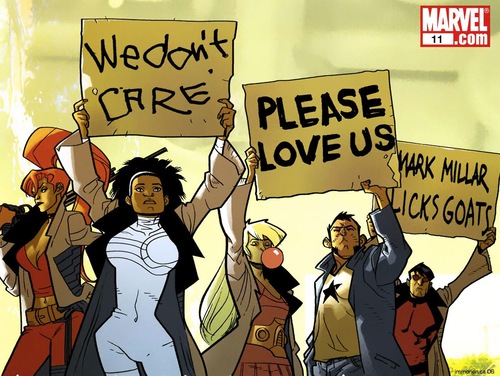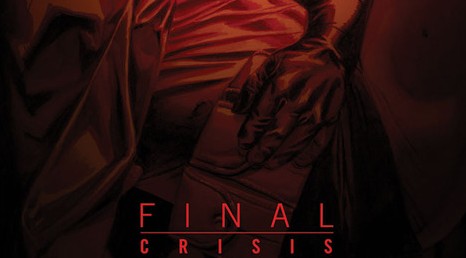Linda Lee is a pretty ordinary girl. She’d rather not do her homework, she fights with her parents and when she comes to stay with her cousin in a new town, she has trouble fitting in; no one understands her habits from her hometown and she doesn’t understand what she’s supposed to do to get in good with everyone; her only friend is a clever, antisocial outcast named Lena (who would hate Linda if she ever found out Linda’s secret) and her twin sister, Belinda, has left her in the lurch by running off to go and get popular and all this as she tries to deal with the weird changes that are hitting her body. But something strange is going on at this new school, something only Linda, Lena and Belinda can uncover—provided Belinda doesn’t sell them out to the principal first.
You might not know the particular story, but you can probably make a few educated guesses as to how it goes. But since this is a blog about superhero comics, you’ve probably figured that there’s something I’m not telling you and you’d be right.
Sorta.
On the one hand, this is exactly what the story is: an all-ages story about three young women trying to navigate the fiendishly related weirdnesses that are puberty and middle school while trying to solve a mystery. Linda’s awkward, Lena’s angry and Belinda’s trying to find herself and differentiate herself from her twin sister.
On the other hand, this is a superhero story, so every plot element that can be exaggerated is. Linda Lee isn’t just a new girl in town; she’s a new girl on the planet. Heck, Linda Lee isn’t even Linda Lee, she’s Kara Zor-El of Krypton and the cousin she’s staying with is Clark Kent, aka Superman. She’s not just going through puberty, she’s also trying to control the amazing super powers she gets under Earth’s yellow sun. Her twin sister is, naturally, an inverted clone of Linda herself (Linda, version B: Belinda Zee!) and her best friend, Lena Thorul is actually the younger sister of supervillain and professional hater-of-Superman-and-all-his-friends Lex Luthor under an anagramed alias; and if Lena ever found out Linda’s true nature, Linda will lose her only friend. The “something strange” going on at the school is far stranger than it might have been otherwise; instead of a crime or a cult or anything else, the school’s administration is under the thrall of Superman villain Mr. Mxyzptlk, an imp from the 5th dimension who plans to drain the 3rd (or is it 2nd if it’s on a page?) dimension dry so that he might be the master of the 5th.
Naturally, Linda/Kara/Supergirl steps up to save not only her friends but her school and, naturally, the whole of the 3rd dimension as well.
So, all that out of the way, the big question: does it work?
It’s nice, for once, to give an unambiguous “yes”.
Supergirl: Cosmic Adventures in the 8th Grade, in contrast to a lot of the other books reviewed so far, is not a book of Big Ideas, it’s not hilarious in its irreverence, it’s not trying to do new things with the conventions of the superhero genre. Eric Jones’ easy, cartoony art is beautiful and fits the story perfectly but (sadly) you won’t see a lot of artists rushing to copy it and while Landry Q. Walker’s plotting might not be the kind of stuff to keep people talking and dissecting like, say, Watchmen or Final Crisis (for, let’s be clear, very different reasons – the former is dense, the latter obtuse) but the simple, beautiful story his script tells is polished to a mirror shine*.
Please don’t misunderstand, I don’t think it’s bad or even mediocre in the slightest. There’s a lot—a lot—to be said for putting out a beautiful and relentlessly good book even if it doesn’t change the world. Indeed, it’s actually rather heartening to see that it’s still possible to make a superhero comic which is exciting, engaging and fun while also poking fun at the worst parts of the genre (see: the special class in Issue 3) and lightly sidestepping them in its own narrative; part of this is certainly the book’s all-ages narrative (no blood, no tits and certainly no bloody tits) but the largest part is just that the humanity in the writing makes everyone—from sweet, lonely Linda to amoral mad-scientist-in-training Lena to duplicitous “mean girl” Belinda—more than just a parade of easy stereotypes, but people worthy of empathy and understanding.
The story embraces one of the great strengths of the superhero genre; making small conflicts into larger, symbolic ones expressed with the tremendous import everything has when you’re younger. Linda’s not hiding, say, relation to a feuded-against person or a non-heteronormative sexual orientation, from her best friend (who hates all people who are like her cousin or like Linda herself), but being a literal alien. Belinda’s need to differentiate herself from Linda takes the form of mystical manipulation and inverted super-powers instead of just a certain kind of viciousness. Lena has a blind hatred of aliens from Krypton that inspires her to use an impressive battle-suit instead of a blind hatred of Lees, Kents or lesbians (or anything else that could stand in for it) that inspires her to just try to beat up her friend—and when she gets over it, it’s after she’s helped save the universe and her brother’s super-science forces a choice in her subconscious instead of just regular old-fashioned growing up.
And between Jones’ art and Walker’s script, it’s all so much more effective than it should be. I knew, reading it, that this was all stuff I’d seen before; not only in teenaged superhero comics but in every third high school movie that’s come out as long as I’ve been alive. But it’s never been necessary to reinvent the wheel, interesting as it always is to see it attempted.
Sometimes it’s enough to be a little strange and a little funny and a little kind in a genre that rarely tries for more than “explosions, laser eyes and laser eyes causing explosions”.
–
–
–
–
–
*I have heard Walker, in a podcast interview, lay out some of the future plans for the series, has it continued; had they the opportunity to follow those plans through, I would probably have reason to retract or amend this statement.
